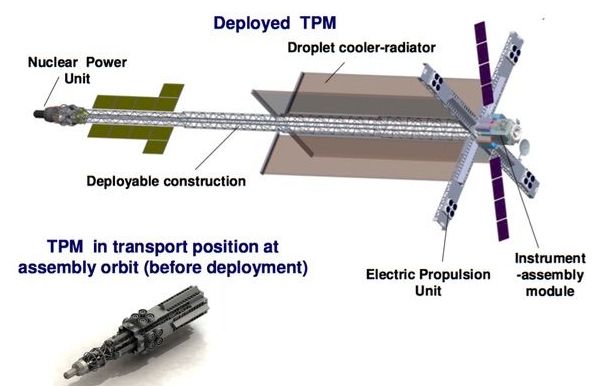Reports surfaced on Twitter of a large bright light in the sky resembling a meteor, which was seen from Sacramento, Lynwood and San Diego.



https://bit.ly/2KMjF50 Dr. David Sinclair Join Dr. Mercola to discuss longevity and his new book “Lifespan”.
Subscribe for the latest health news: https://articles.mercola.com/subscribe.aspx
Visit our website: https://www.mercola.com
Listen to our podcasts: https://www.mercola.com/downloads/podcast.htm
Find us on Social Media
Facebook: https://www.facebook.com/doctor.health
MeWe: https://mewe.com/p-front/dr.josephmercola
Instagram: https://www.instagram.com/drmercola
Twitter: https://twitter.com/mercola

The extraterrestrial gods of genesis
In the Sumerian poem known as Genesis 1, we are told: “In the beginning God created the heaven and the earth. And the earth was without form, and void; and darkness was upon the face of the deep. And the Spirit of God moved upon the face of the waters.”
Genesis 1 is a story about life. If there is a “god” and if all things come from “god” then what might be the “spirit of god” if not life? And if god is life, and all things come from god, including other planets, then the spirit of god must have hovered over all of creation—meaning: Life is everywhere, throughout the cosmos.

GenSight Biologics has recently released data showing the effectiveness of GS010, the company’s gene therapy for Leber Hereditary Optic Neuropathy (LHON), a mitochondrial disease that can lead to blindness. Like in previous studies, this therapy had a bilateral effect.
Gene Therapy
In LHON, the mitochondrial protein ND4 is poorly expressed through mitochondrial DNA (mtDNA). GS010 is a gene therapy that causes this protein to be allotropically expressed in the nucleus, after which it is shuttled to the mitochondria through messenger RNA. This makes GS010 a partial treatment for mitochondrial dysfunction, which is one of the hallmarks of aging.

There is strong evidence from publicly available sources that a Russian company called KB Arsenal is working on a new type of military satellite equipped with a nuclear power source. Called Ekipazh, its mission may well be to perform electronic warfare from space.
KB Arsenal, based in St. Petersburg, is no newcomer to the development of nuclear-powered satellites. In the Soviet days it built satellites known as US-A (standing for “active controllable satellite”), which carried nuclear reactors to power radars used for ocean reconnaissance (in the West they were known as “radar ocean reconnaissance satellites” or RORSAT for short.) The satellites had been conceived in the early 1960s at the OKB-52 design bureau of Vladimir Chelomei before work on them was transferred to KB Arsenal at the end of that decade. The satellites’ three-kilowatt thermoelectric reactors, known as BES-5 or Buk, were built by the Krasnaya Zvezda (“Red Star”) organization. The US-A satellites operated in low Earth orbits at an altitude of roughly 260 kilometers and, after finishing their mission, the reactors were boosted to storage orbits at an altitude of about 900 kilometers.

Scientists are exploring how to edit genomes and even create brand new ones that never existed before, but how close are we to harnessing synthetic life?
» Subscribe to Seeker! http://bit.ly/subscribeseeker
» Watch more How Close Are We | http://bit.ly/HCAWplaylist
» Follow Olivia on Instagram: instagram.com/OliviaPavcoG
Scientists have made major strides when it comes to understanding the base code that underlies all living things—but what if we could program living cells like software?
The principle behind synthetic biology, the emerging study of building living systems, lies in this ability to synthesize life. An ability to create animal products, individualized medical therapies, and even transplantable organs, all starting with synthetic DNA and cells in a lab.
There are two main schools of thought when it comes to synthesizing life: building artificial cells from the bottom-up or engineering microorganisms so significantly that it resynthesizes and redesigns the genome.
With genetic engineering tools becoming more and more accessible, researchers want to use these synthesized genomes to enhance human health with regards to things like detecting infections or environmental pollutants. Bacterial cells can be engineered that will detect toxic chemicals.
And these synthesized bacteria could potentially protect us from, for example, consuming toxins in contaminated water.

In the iconic frontispiece to Thomas Henry Huxley’s Evidence as to Man’s Place in Nature (1863), primate skeletons march across the page and, presumably, into the future: “Gibbon, Orang, Chimpanzee, Gorilla, Man.” Fresh evidence from anatomy and palaeontology had made humans’ place on the scala naturae scientifically irrefutable. We were unequivocally with the animals — albeit at the head of the line.
Biological advances have repeatedly changed who we think we are, writes Nathaniel Comfort, in the third essay of a series marking Nature’s anniversary on how the past 150 years have shaped science today. Biological advances have repeatedly changed who we think we are.